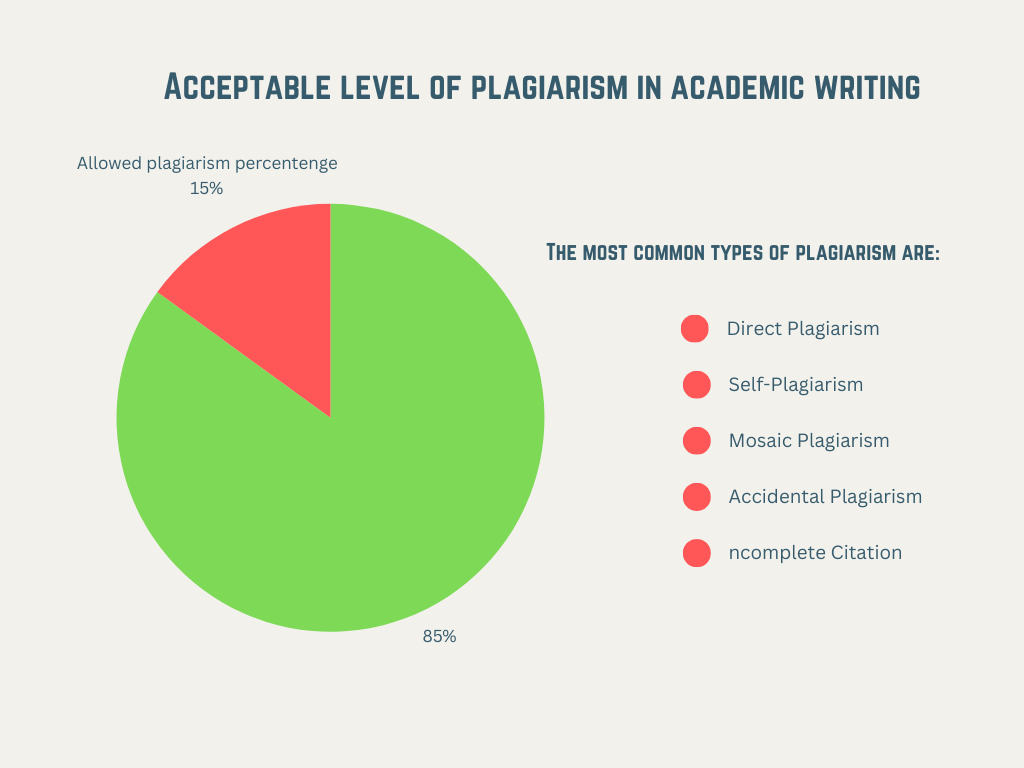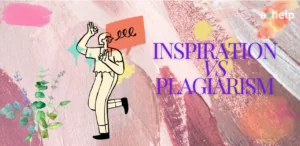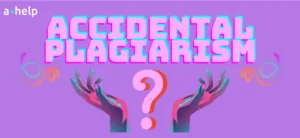Plagiarism – the act of using someone else’s work or ideas without proper attribution – is considered a serious ethical breach in academia. Universities and colleges across the globe strive to uphold standards of originality and academic integrity. However, a common question that arises among students and educators is: how much plagiarism, if any, is allowed in academic content? To be frank, the amount of plagiarism allowed varies depending on the institution and context, with some tolerating a similarity index of up to 10-15%.

✅ AI Essay Writer ✅ AI Detector ✅ Plagchecker ✅ Paraphraser
✅ Summarizer ✅ Citation Generator
The Definition of Plagiarism
Before delving into the permissible limits, we have to understand what constitutes plagiarism. It goes beyond mere copying and includes the replication or duplication of someone else’s intellectual theft, including ideas, expressions, and even specific structures. Plagiarism undermines the core values of education, such as creativity, innovation, and authenticity.
Academic Standards for Originality
Most universities and educational institutions advocate a zero-tolerance policy towards plagiarism. This implies that any form of unoriginality, whether intentional or accidental, is not permissible. The expectation is that all submitted papers and essays demonstrate a high degree of originality and inventiveness.

Tools like plagiarismcheck.org have become integral in academic settings for ensuring content originality. These plagiarism checkers and originality detection tools analyze texts for similarity with existing content, helping institutions and students maintain scholarly integrity.
The Gray Area of Similarity Percentages
The concept of a plagiarism ‘percentage’ or ‘rate’ is often used by plagiarism detection tools to indicate the proportion of text that matches existing sources. While these tools provide a similarity score, interpreting this score can be complex. A low percentage may not always signify permissible use, and a higher percentage does not always equate to blatant plagiarism.
Context Matters
The context in which the similarity occurs is important. Direct quotes, common knowledge, and universally accepted facts might show up as similar but are generally not considered plagiarism if appropriately cited. The key is in how these sections are integrated into the paper and whether they contribute to the academic or scholarly value of the work.
The Acceptable Threshold in Universities
There is no universal standard for an ‘acceptable’ plagiarism percentage. Different institutions and educators may have varying thresholds, often depending on the nature of the assignment, the level of study, and the subject matter. Some universities might tolerate a similarity index of 10-15% as permissible, considering it an accidental or coincidental resemblance.

Ultimately, the determination of what constitutes an acceptable level of similarity lies with the academic judgment of educators and the plagiarism policies of specific institutions. How do professors check for plagiarism? Professors and academic committees assess whether the content demonstrates sufficient originality and intellectual effort using certain tools like AI detectors and plagcheckers.
Plagiarism in Different Types of Academic Work
In research papers and essays, the expectation for originality is usually stringent. The allowance for similarity is minimal, and students are expected to produce work that showcases their understanding, analysis, and synthesis of the subject matter.
In technical and scientific reports, some level of similarity might be inevitable due to the use of standard terminologies and methodologies. However, the core findings, analysis, and conclusions must be distinctly the author’s own work.
Strategies for Avoiding Plagiarism
One key strategy is mastering the art of paraphrasing – expressing the same ideas in different words without losing the original meaning. Equally important is the proper citation of sources, which acknowledges the original authors and avoids the pitfalls of academic theft. Some tools also have a “check for plagiarism free” so you can use them to be sure your work is fine.
Encouraging students to develop their critical thinking and analytical skills is essential in fostering originality. This approach promotes a deeper engagement with the material, leading to more authentic and innovative academic work.
Integrity in Education
While the permissible level of plagiarism can vary, the overarching principle in academia is to strive for the highest standards of originality and ethical scholarship. The use of plagiarism detection tools like plagiarismcheck.org aids in maintaining these standards. However, the ultimate responsibility lies with students and educators to cultivate and uphold the principles of academic integrity, so that the educational pursuit remains a quest for knowledge, learning, and genuine intellectual growth.
FAQ
Follow us on Reddit for more insights and updates.





Comments (0)
Welcome to A*Help comments!
We’re all about debate and discussion at A*Help.
We value the diverse opinions of users, so you may find points of view that you don’t agree with. And that’s cool. However, there are certain things we’re not OK with: attempts to manipulate our data in any way, for example, or the posting of discriminative, offensive, hateful, or disparaging material.